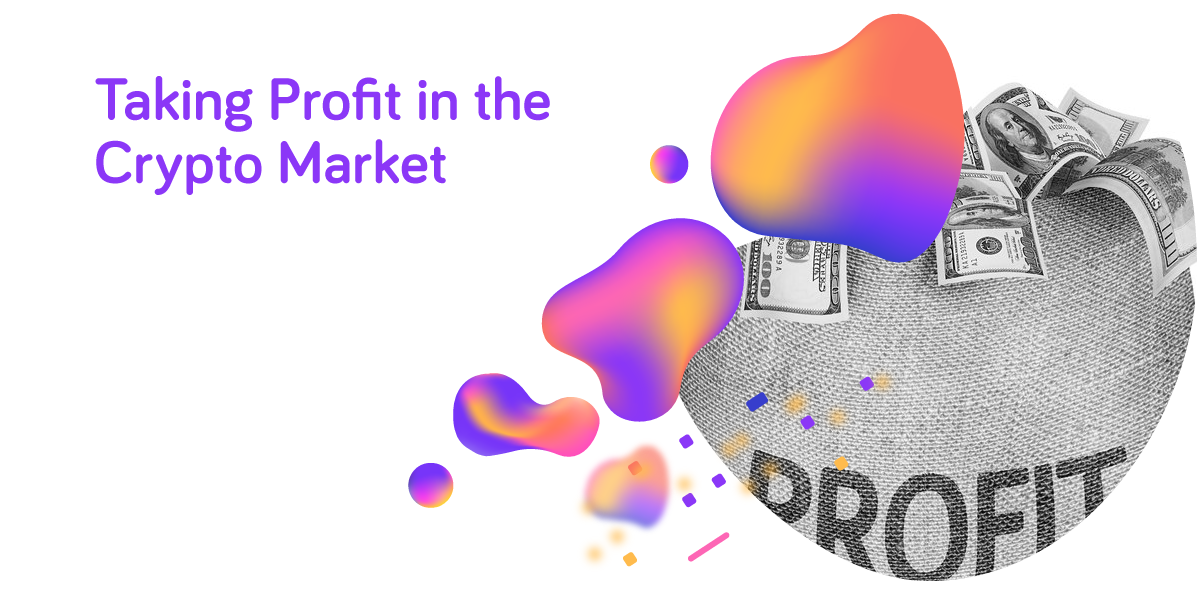Ever since Bitcoin was created in 2009, the cryptocurrency market has experienced many growth and decrease cycles, even within prolific trends called Bear and Bull markets. Each decrease in the market was followed by a recovery and significant growth, making crypto volatility well known among traders. When the price is appreciated, it’s important to take profits off the table, so we’re not risking remaining with money stuck in transactions, waiting for new growth.
What does it mean to take profits?
One invested $100 in Solana when the price was $80. Now that the price has almost doubled, reaching $140. The trader made a profit from its initial investment of $100. The trader can choose to leave it there if they consider it a long-term investment — or they can take the funds out, either all of it or just the profit, not touching the initial investment.
Given crypto’s high volatility, many cryptocurrencies that are not stable do not make out of this market a medium for long-term investments, only if there’s a Bear Market that provides low enough entries.
Profit-taking is done through a complete or partial sale of an asset. For example, suppose many traders desire to make a profit after significant growth. In that case, this situation could lead to an aggressive pullback, knowing that smaller Altcoins rely heavily on the retail market, not institutional investors.
Why is it important to take profits?
Profit-taking is a crucial element of success when trading cryptocurrencies because it’s the only moment a trader effectively realizes a profit. Otherwise, the asset’s price risks a downfall, and the potential payoff will be lost. Thus the investment will get back to zero or become a losing trade.
Any potential or paper profit will mean nothing until the transaction is closed and the gain is set aside. Then, psychologically speaking, we will feel the best, and we will be confident in our following choices, even if the particular asset will not only go up in price. Profit-taking is an essential aspect of the risk/reward ratio — that determines the equilibrium between potential profit and potential loss of a given trade or position.
If we trade according to a plan and take the profit when necessary, it’s way less probable to fall into psychological traps that would negatively influence our choices and decisions. The fear of missing out on a trade is an excellent example of greed and impatience. If these emotions are not adequately controlled, they have the habit of leaving traders without any gain before their price target is met.
What is my purpose when I trade?
It’s vital to ask ourselves the purpose of our trading and investing and over what period. Then, depending on our risk profile and our intentions with potential profits, we can choose what to do with the money after taking the profit from assets that have appreciated their price. Suppose the purpose is extended over the long-term, and after careful analysis, the trader considers that a given cryptocurrency will go from $1 to $10. In that case, the trader should dollar-cost average during regression periods. He is not going to worry that the asset’s price may be $0.5 at some point if the target is going to be met.
Let’s say, for example, that one wishes to pay monthly bills with profits made from cryptocurrency trading. This can be done by profit-taking the required sum of money, leaving the rest on the platform. Also, suppose one has available credit cards, a bank loan, or any other form of debt. In that case, it’s recommended to pay those with obtained gains, especially if the interest rate is considerable on these loans, regardless of market conditions.
Finally, after paying possible debts, it’s essential to put aside a liquid sum of money for emergencies that can appear in our lives and require more money than our primary source of income.
Market opportunities
Market pullbacks are full of opportunities that can be very profitable. For example, we can use available liquidity to purchase assets at significantly lower prices, making more significant profits with the same initial investment. In addition, regardless of the market’s latest trend, traders can use margin trading and short-sell cryptocurrencies — an excellent strategy to profit from when long positions may stagnate. Besides this active trading strategy, staking and yield farming can be two alternatives that bring profit without transacting.
If you want to start your journey as a crypto trader and try out the information above, Your Friendly Crypto Exchange is here to meet all of your needs. Register on IXFI and enjoy a truly seamless experience.
Disclaimer: The content of this article is not investment advice and does not constitute an offer or solicitation to offer or recommendation of any investment product. It is for general purposes only and does not take into account your individual needs, investment objectives and specific financial and fiscal circumstances.
Although the material contained in this article was prepared based on information from public and private sources that IXFI believes to be reliable, no representation, warranty or undertaking, stated or implied, is given as to the accuracy of the information contained herein, and IXFI expressly disclaims any liability for the accuracy and completeness of the information contained in this article.
Investment involves risk; any ideas or strategies discussed herein should therefore not be undertaken by any individual without prior consultation with a financial professional for the purpose of assessing whether the ideas or strategies that are discussed are suitable to you based on your own personal financial and fiscal objectives, needs and risk tolerance. IXFI expressly disclaims any liability or loss incurred by any person who acts on the information, ideas or strategies discussed herein.


